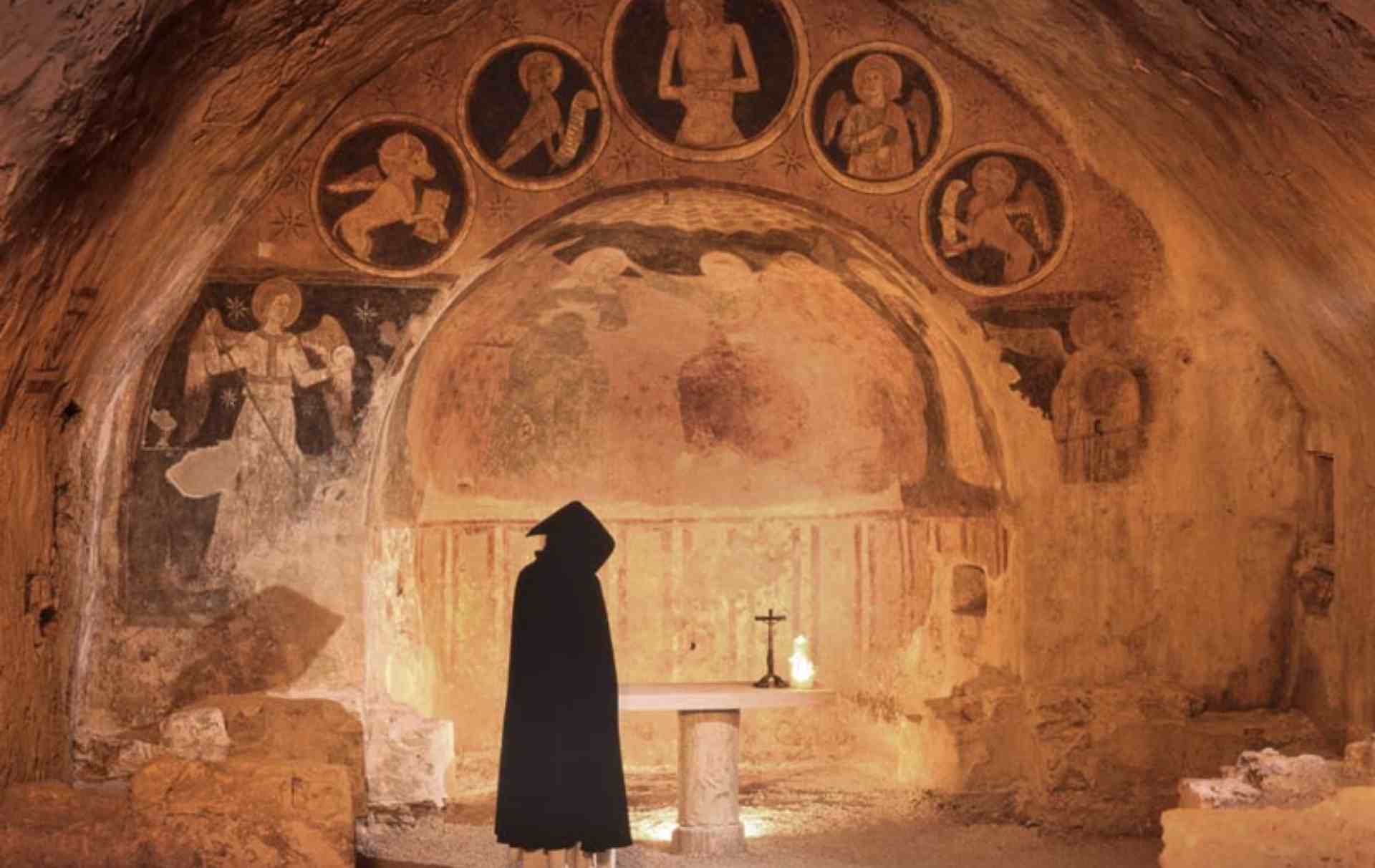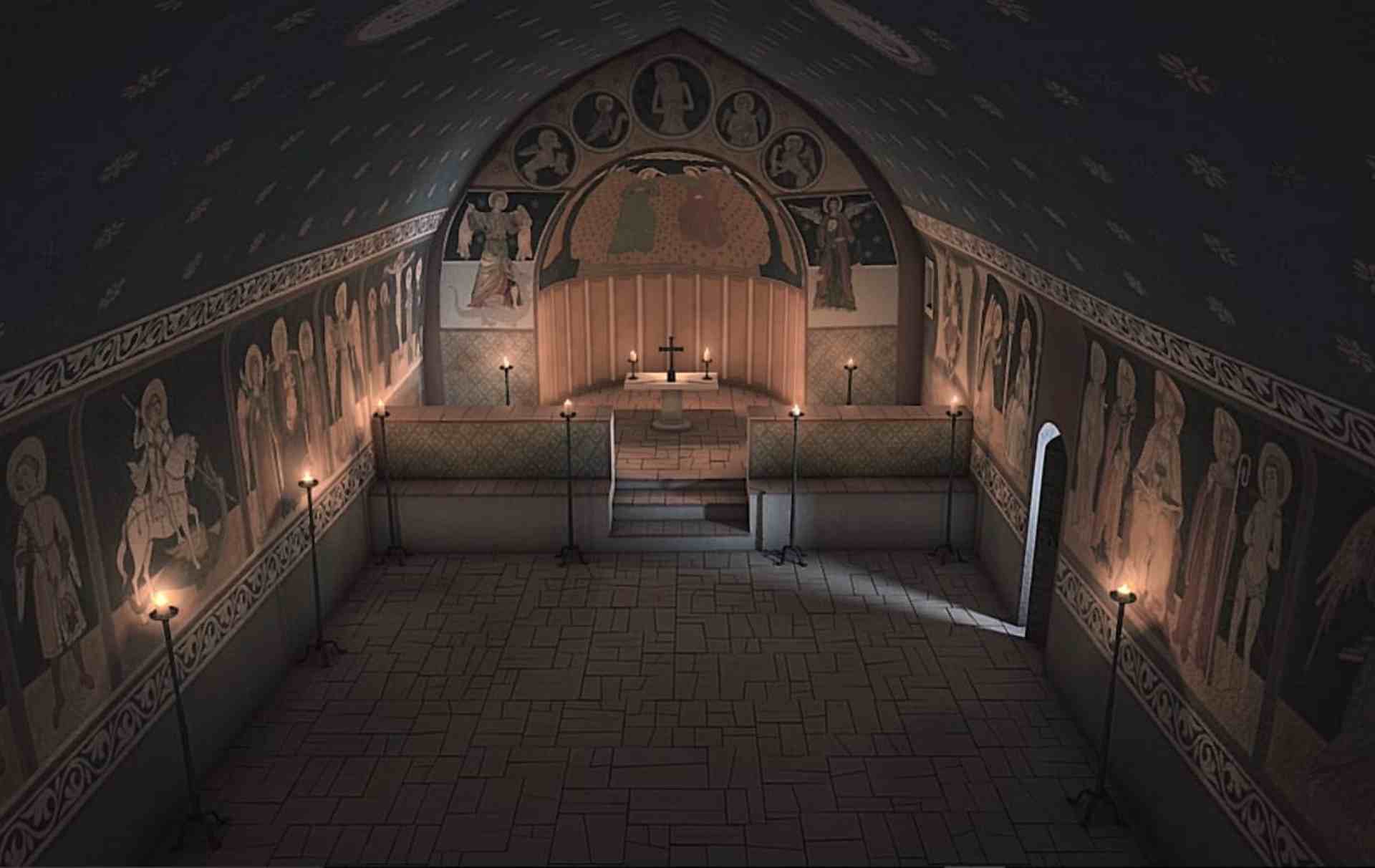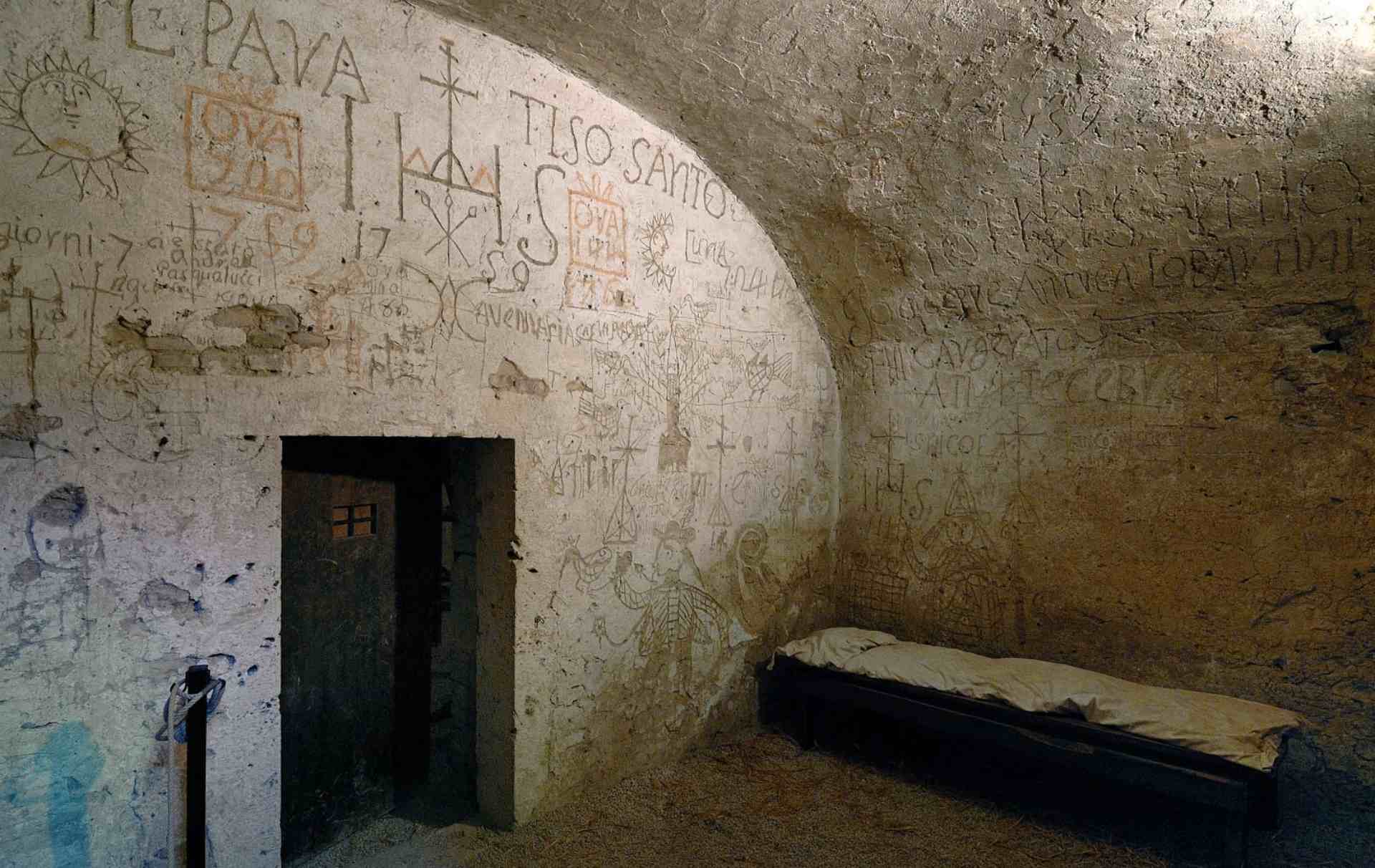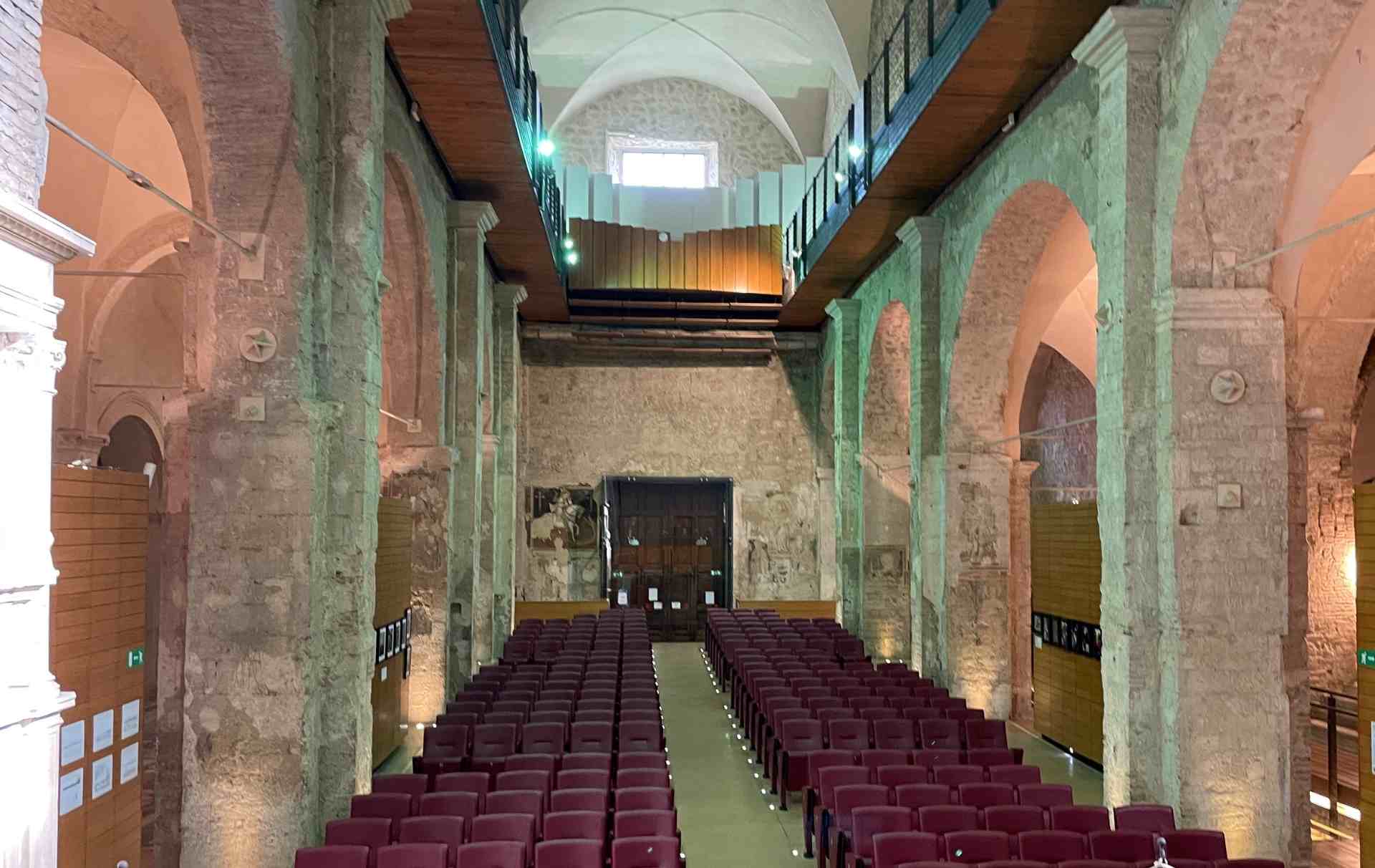More than a complex of churches and hypogeal ambience, Narni Underground is a story: the history of its incredible discovery in 1979 and the events that made it one of the most charming places of Italy.
Narni Underground and a history that starts from its incredible discovery.
Were some guys of the speleological group of UTEC di Narni who, intent on testing new ropes coming down from the space that today are the Gardens of San Bernardo, in 1979 they came across a small passage through a wall that led to a frescoed environment.
It had just been rediscovered what, shortly after, would be renamed Santa Maria della Rupe but which originally was a church dedicated to San Michele inside an ancient Dominican convent.
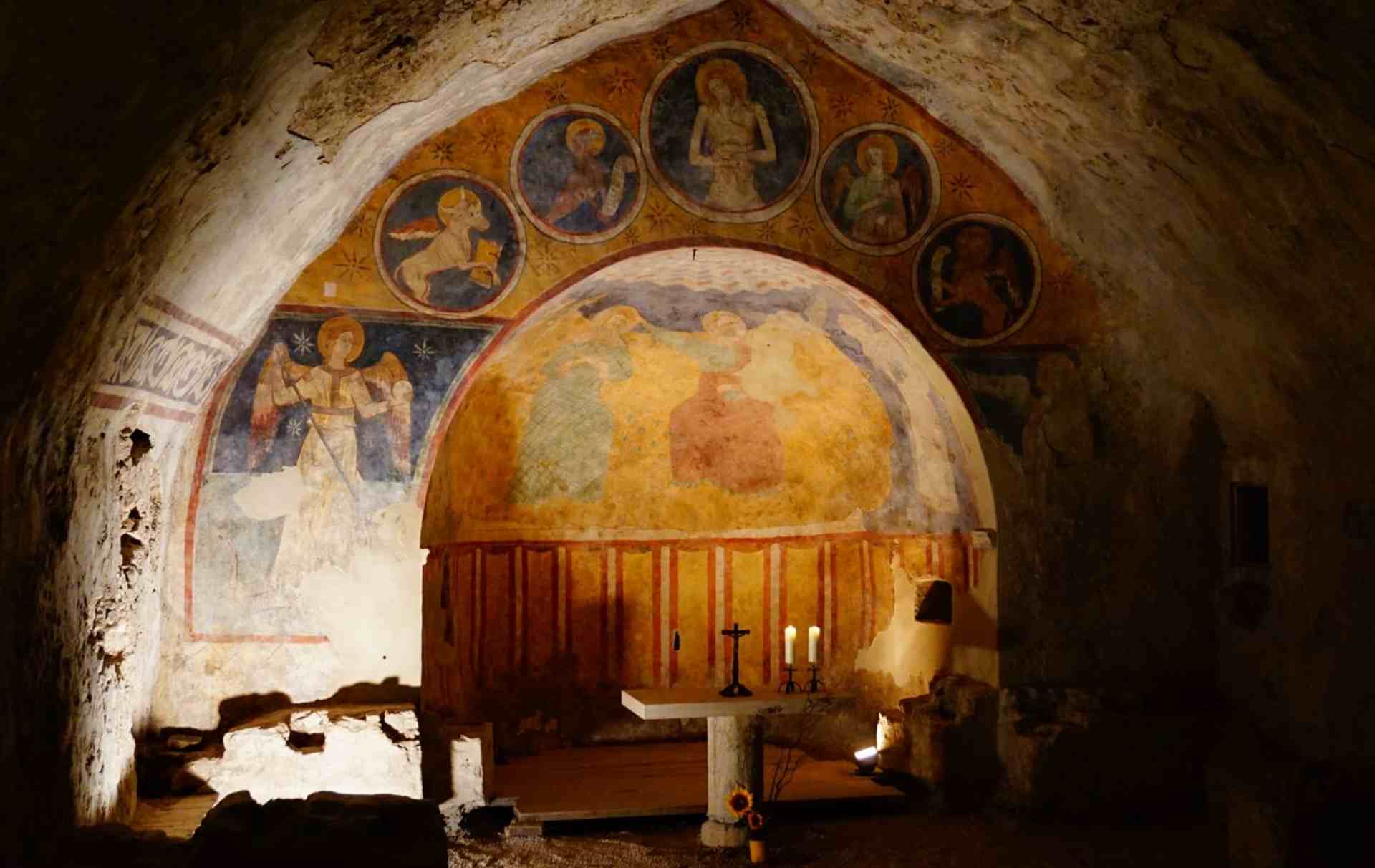
The Church of Santa Maria della Rupe.
It’s from the Church of Santa Maria della Rupe from the XIII century, today completely restored , that starts the suggestive journey where a video, with virtual reconstructions, explain the evolution of this first ambience which today preserves the most ancient frescoes of the city.
The news written around the building are in a manuscript from the XVIII century and in two notarial deeds, thanks to which we can reconstruct that in the half of the XIV century were used as a capitol room annex to the convent above.
The archeological and philological study of the decoration has shown three next steps:
- one first phase dating to the XII-XIII century, corresponds to the edification of a first ambience inside the naturale cave next to an ambience with a roman cistern on an ancient foundation , probably from the longobardi, considered the presence of a fresco with San Michele
- a second phase dating to the XIV century where, corresponding to the arrival of the dominicans, the structure were inglobated inside the convent and was built a new floor and , on the lateral walls , sessions marked by a band of clipei to indicate the seats reserved for monks;
- one last phase, between the XVII and the XVIII century, the building lost its function and, under the French occupation , became a cellar.
The Roman domus and the Aqueduct of Formina.
The second ambience, probably part of a roman domus which preserves a cistern and to which you can enter through a gap in the masonry, is dedicated to the roman hydraulic engineering and to the presentation of the Formina Roman Aqueduct, open only with reservation.
A 3D reconstruction of the aqueduct section, a model and the tools that used the mensor of a legion for the tracing and construction of the structures, tell how, during the Roman Narnia, an engineering work of this magnitude could have been carried out.
The Torment Room and the cell that held Giuseppe Andrea Lombardini prisoner.
Passed a long hallway you arrive into the most suggestive ambience, the Torment Room – as it called into the documents found into the Vatican Archives and in the Trinity College – rebuilt with some torture machines used by the Court of Inquisition.
A small adjacent cell, unique in its kind, documents with graffiti marks on the walls the sufferings suffered by the inquisitions, one of whom, Giuseppe Andrea Lombardini, wanted to leave a message to posterity through a graphic code made of symbols, whose mystery was finally deciphered thanks to a series of coincidences and the stubbornness of Roberto Nini, one of the six boys discoverers.
To discover the rest of the story, you just have to discover it inside this magical place.
The Church of Santa Maria Maggiore, today Auditorium Bortolotti.
More archeological excavations have allowed to discover a crypt from the XII century, some mosaics from the Byzantine period and the apse of the Church of Santa Maggiore, in the past Cathedral of Narni today Auditorium Bortolotti.
Narni Underground
Via S. Bernardo, 12, 05035 Narni TR
Saturday, Sunday and holidays (Christmas excluded):
- Guided visit from 10am to 5.30pm (last visit)
- departure visit every 30 min
- obligatory reservation only through phone
Park the car into the Suffragio Parking and go up with the elevator until Via Garibaldi.
Discover Narni.
Continue to walk with us discovering what to see inside the walls of Narni.
Or discover the points of interest of Narni and of its territory:

Via del Campanile
A stair that goes from Via Garibaldi clambers up through one of the highest points of Narni: Via del Campanile is one of the most
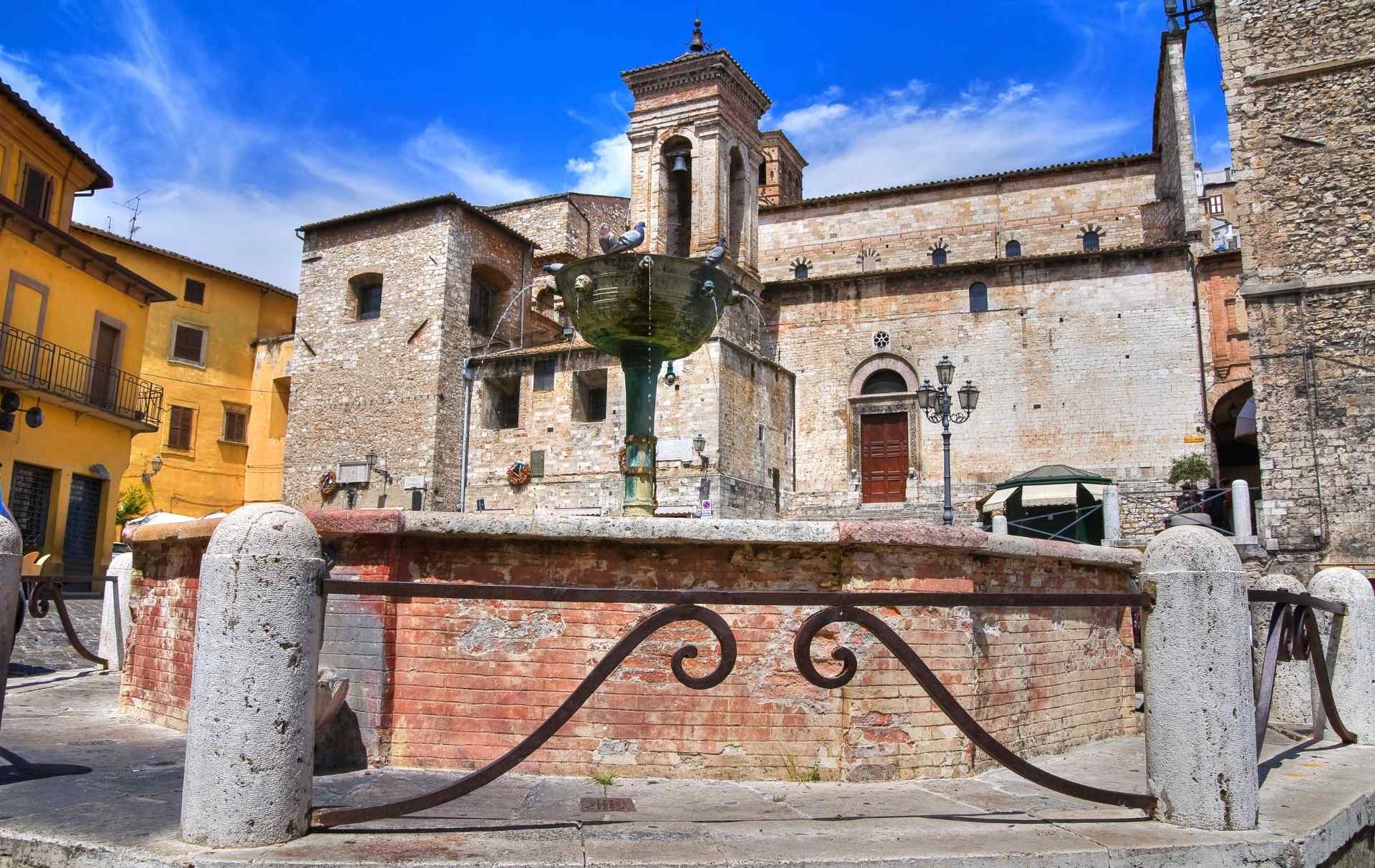
Piazza Garibaldi
Piazza Garibaldi (Garibaldi Square) was once called Lake Square or Lacus square because of a large cistern used during the Middle Ages to provide water

The Church of San Francesco
Arriving from the close via del Campanile or directly from Piazza dei Priori, you can only be kidnapped by the late Romanesque features of the

